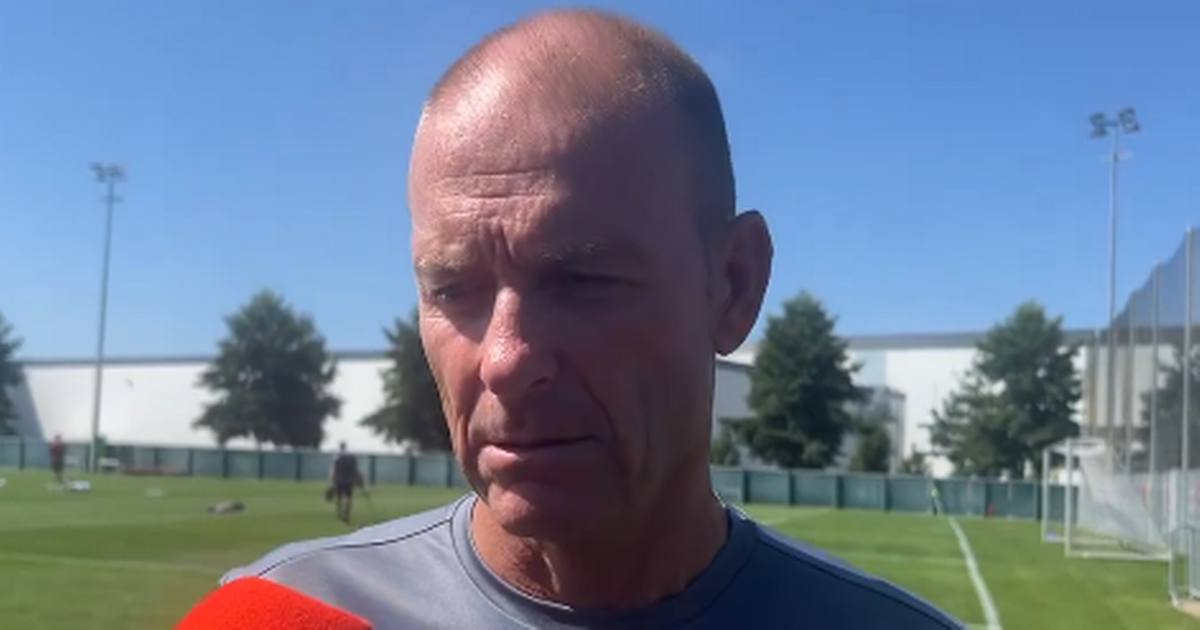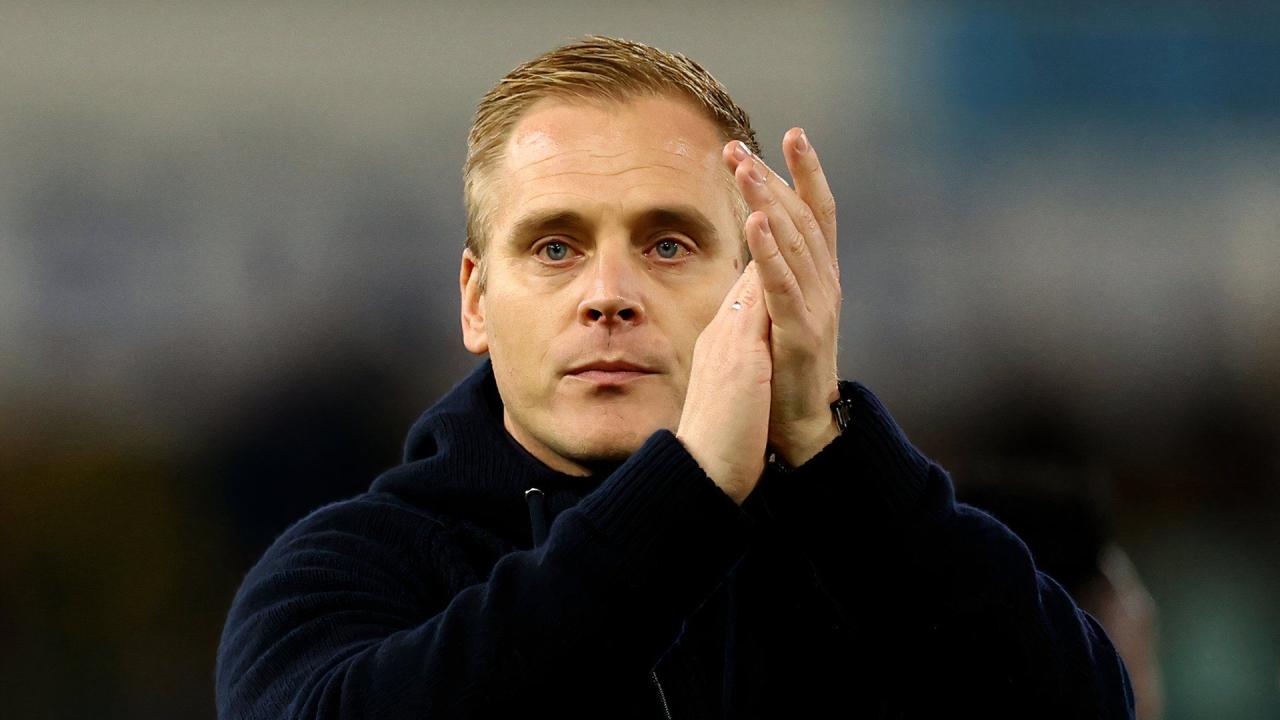Thorup outlines City striker plans after Ashley Barnes exit – Thorup Artikels City striker plans after Ashley Barnes exit. The unexpected departure of Ashley Barnes leaves a significant hole in City’s attacking lineup, forcing manager Thorup to quickly formulate a strategy to fill the void. This article delves into Thorup’s tactical philosophy, examines the current squad’s capabilities, explores potential transfer targets, and Artikels both short-term and long-term plans for the striker position.
Get ready for a deep dive into the future of City’s attack!
We’ll analyze Thorup’s preferred playing style and the specific striker attributes he values, comparing his approach to that of past City managers. We’ll then assess the strengths and weaknesses of the current strikers, considering both internal solutions and external transfer options. Finally, we’ll look at how the team might adapt to Barnes’ absence and what the future holds for City’s striking force.
Thorup’s City Striker Plans Post-Barnes Departure
The departure of Ashley Barnes leaves a significant gap in City’s attacking line. Manager Thorup now faces the challenge of finding a suitable replacement, a process requiring careful consideration of tactical preferences, available resources, and long-term strategic goals. This article Artikels Thorup’s likely approach to filling this crucial position.
So, Thorup’s got to figure out Burnley’s striker situation now that Barnes is gone. He needs to find a replacement, and maybe use some slick marketing to announce the new signing. Imagine a video with a super realistic announcement using the best AI voice generator for realistic human voices – that would get fans hyped! It could really make a difference in how the club presents the news.
Back to Thorup’s plans, securing a strong striker is key to Burnley’s success this season.
Thorup’s Managerial Philosophy and Striker Requirements

Thorup’s tactical approach generally favors a fluid 4-3-3 formation, sometimes shifting to a 4-2-3-1 depending on opponent strategy and squad fitness. This system demands a striker with versatility. While a clinical finisher is essential, the striker must also contribute to build-up play, linking effectively with midfielders and wingers. Thorup prioritizes high work rate and pressing, meaning the ideal striker needs stamina and tactical awareness beyond just goalscoring prowess.
Unlike previous managers who perhaps favoured a more traditional target man, Thorup’s system requires a more mobile and dynamic forward.
Compared to previous managers, Thorup’s demands are more holistic. Previous regimes may have prioritized aerial ability or pure goalscoring above all else. Thorup seeks a complete package.
So, Thorup’s got Burnley’s striker search on after Barnes left, right? It’s a big deal for them to find a replacement. Meanwhile, completely unrelated, did you hear about Apple to pay $95M to settle lawsuit accusing Siri of eavesdropping ? Crazy, huh? Anyway, back to Burnley, Thorup’s probably got a shortlist of potential strikers he’s eyeing.
| Attribute | Importance | Desired Skill Level | Example Player |
|---|---|---|---|
| Finishing | High | Advanced | Harry Kane |
| Pace | High | Advanced | Mohamed Salah |
| Link-up Play | Medium | Intermediate | Roberto Firmino |
| Pressing | High | Advanced | Sadio Mané |
Assessing the Current Striker Options
Following Barnes’ departure, City’s existing strikers present a mixed bag of strengths and weaknesses. A thorough assessment is crucial before considering external signings. Internal solutions, such as promoting youth players, might offer short-term relief, but their long-term suitability remains uncertain.
- Player A: Strengths – Good work rate, decent finishing; Weaknesses – Lacks pace, struggles with hold-up play. Statistics show a high conversion rate but limited overall touches in the final third.
- Player B: Strengths – Excellent hold-up play, strong aerial ability; Weaknesses – Limited pace, poor finishing. Statistics indicate a low shot accuracy despite creating numerous chances.
- Player C: Strengths – Pace, dribbling skills; Weaknesses – Inconsistent finishing, lacks physicality. Statistics show a high number of successful dribbles but a low goals-to-shot ratio.
Relying solely on these players would likely limit City’s attacking options and flexibility, potentially hindering Thorup’s tactical plans.
Potential Transfer Targets and Their Profiles
To address the striker shortage, Thorup will likely explore the transfer market. Three potential targets, balancing suitability with budget, are considered below. Each candidate’s impact on team dynamics and squad balance must be carefully evaluated.
| Player Name | Club | Key Strengths | Estimated Transfer Fee |
|---|---|---|---|
| Target A | Example Club 1 | Clinical finishing, excellent movement, strong work ethic | £20 million |
| Target B | Example Club 2 | Pace, dribbling ability, creative passing | £15 million |
| Target C | Example Club 3 | Aerial ability, hold-up play, physical presence | £10 million |
The Impact of Barnes’ Departure on Team Dynamics, Thorup outlines City striker plans after Ashley Barnes exit

Barnes provided a crucial blend of experience, physicality, and leadership. His departure creates a void not easily filled. The team’s attacking strategy, particularly in build-up play and aerial duels, will need significant adjustment.
Adapting to Barnes’ absence might involve shifting to a more possession-based approach, relying less on direct long balls and more on intricate passing sequences to create scoring opportunities. This would require the midfield to be more involved in the final third and the wingers to make more penetrating runs. The team’s pressing intensity might also need adjustment to compensate for the loss of Barnes’ physical presence.
Thorup’s Short-Term and Long-Term Plans

Thorup’s immediate priority is securing a short-term solution, potentially a loan signing or a relatively inexpensive transfer, to bolster the squad for the upcoming season. Long-term, he might focus on developing a young, promising striker from within the academy or investing in a high-profile player to build around for years to come. This dual approach aims for immediate competitiveness while also securing the future of the club’s attacking force.
- Short-Term (Next 6 months): Secure a temporary striker via loan or budget-friendly transfer.
- Mid-Term (Next 1-2 years): Evaluate and potentially promote youth players; explore more substantial transfers based on performance and budget.
- Long-Term (Beyond 2 years): Develop a homegrown talent into a first-team regular; potentially sign a high-profile, long-term striker.
Epilogue: Thorup Outlines City Striker Plans After Ashley Barnes Exit
Replacing a key player like Ashley Barnes is never easy, but manager Thorup seems well-prepared to navigate this challenge. His clear vision, combining short-term fixes with long-term strategic planning, suggests a confident approach to rebuilding City’s attacking prowess. The success of his strategy will depend on a number of factors, including the availability of funds, the performance of existing players, and the successful integration of any new signings.
The coming months will be crucial in determining whether Thorup’s plans bear fruit and solidify City’s position on the pitch.
Detailed FAQs
What are Ashley Barnes’s key strengths as a striker?
Barnes was known for his aerial ability, physical presence, and link-up play.
What are the financial implications of replacing Barnes?
The cost will depend on whether City opts for a free transfer, a loan, or a permanent signing, and the transfer fee involved.
So, Thorup’s outlining Burnley’s striker plans now that Barnes is gone – a big task! Finding a replacement involves considering global supply chains, and it’s worth noting how much manufacturing power is concentrated in one place, like you can see by checking out this article on China is the manufacturing superpower | Hacker News – it might affect kit supply for the new striker.
Ultimately, Thorup needs to find the right player, regardless of where their boots are made.
How might youth players impact the striker position?
Promoting youth could offer a cost-effective solution, but also carries risk due to inexperience at the top level.
What tactical formations might Thorup utilize to compensate for Barnes’ loss?
Thorup might adapt formations to utilize the strengths of the remaining players, possibly shifting to a more fluid or possession-based system.